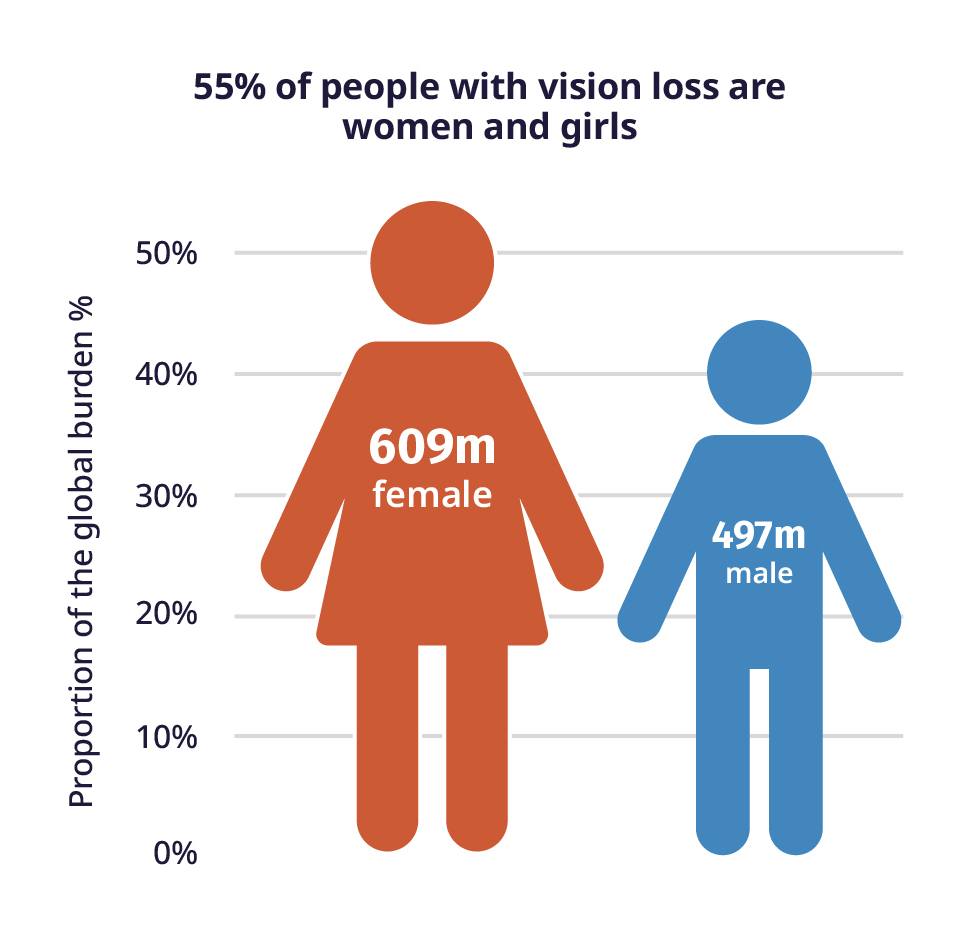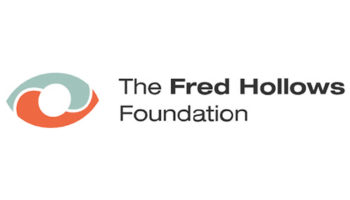Join a powerful, unprecedented alliance for better eye health for all.
Join IAPBInequality in Vision Loss
Gender
There are more females than males with vision loss in every category of vision impairment and blindness.
55% of people with vision loss are women and girls
Of the 1.1 billion people with vision loss, 609 million are female (55%), compared to 497 million males (45%).

Overall, women are 12% more likely to have vision loss than men
Women are:
- 8% more likely to be blind,
- 15% more likely to have moderate to severe vision impairment,
- 12% more likely to have mild vision impairment and
- 11% more likely to have near vision impairment.
Data from VLEG/GBD 2020 model.
Why do females experience more vision impairment?
The average life expectancy of women is longer than for men and many eye conditions such as cataract, presbyopia, glaucoma and age-related macular degeneration are associated with increasing age.
Women can also be at greater risk for certain eye conditions such as cataract and trachomatous trichiasis, particularly in low- and middle-income countries.
In many countries women have less access to eye health services due to various socio-economic and cultural.
Barriers to services
Many barriers prevent both women and men from accessing eye health services, but these barriers can often more problematic for women.
For instance:
- Costs: Women often have less access to family financial resources to pay for eye care or transportation to reach services.
- Inability to travel: Women often have fewer options for travel than men. Older women may require assistance, which poor families cannot provide.
- Differences in the perceived value of eye health services: A decline in vision is often viewed as an inevitable consequence of ageing and women are less likely to have social support in a family to seek care across a range of settings.
- Lack of access to information and resources: Female literacy can be lower than for males, especially among the elderly. As a result, women can be less likely to know about the possibility of treatment for eye disease or where to go to receive it.
Unless we make special efforts to ensure eye services for women the correctable disparities in vision loss between men and women will continue.








